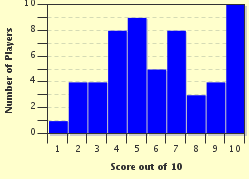Quiz Answer Key and Fun Facts
1. Constantine the Great was the first Emperor who based his reign in Constantinople (formerly known as Byzantium). Which of his sons did *NOT* succeed him in any part of the Empire?
2. In 457 Leo I the Thracian ascended to the throne, the first of the Leonid dynasty. Where was he born?
3. The last Byzantine Emperor from the Justinian dynasty had a name we don't usually associate with Roman or Byzantine rulers. What was his name? (He might have known where the wild things are).
4. One of the most recognizable of the Byzantine Emperors would certainly be Justinian II Rhinotmetos, Emperor between 685 and 695 and once again from 705 until 711. What was striking about his appearance?
5. What was the main focus of the internal politics of the Isaurian dynasty (717-802)?
6. In 802 a logothete (major official) became Emperor. His son Staurakios would succeed him in 811 for a few months, then followed by the logothete's son-in-law Michael I. Who was this logothete, who (according to his name) would have brought victory?
7. Which dynasty ruled Byzantium between 867 and 1056? It was named after the place of birth of its founder Basil I.
8. Which Byzantine Emperor was wounded at the battle of Manzikert in 1071? He didn't live in a barrel, though.
9. Who was the byzantine Emperor with the longest continuous reign?
10. Although most Emperors stay on for life, one Byzantine Emperor ascended to the throne thrice.
Source: Author
JanIQ
This quiz was reviewed by FunTrivia editor
gtho4 before going online.
Any errors found in FunTrivia content are routinely corrected through our feedback system.

